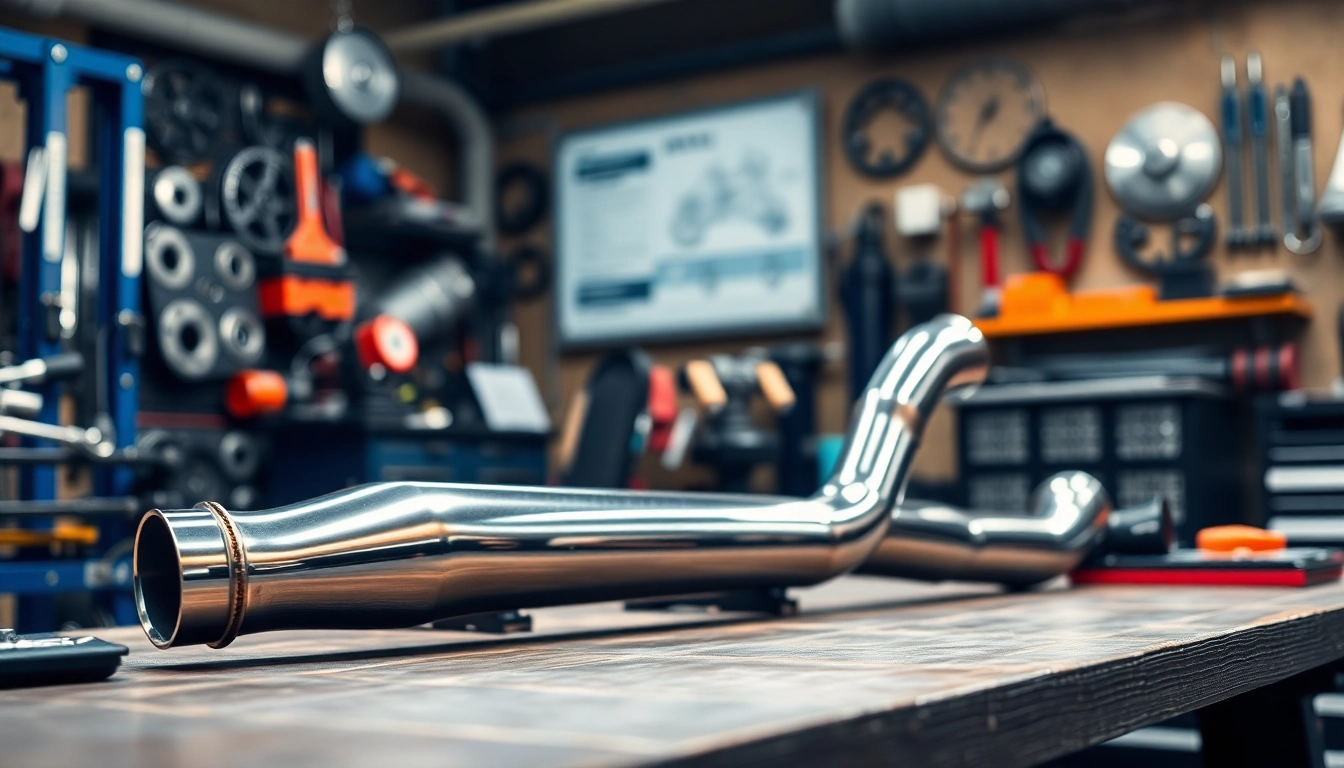Introduction to Single Midpipe
The automotive world is full of options for enhancing performance, with exhaust systems often being a focal point for modifications. Among these options, the single midpipe has gained popularity among enthusiasts looking to optimize their vehicles. This article will dive deep into what a single midpipe is, its benefits, common applications, and how it compares to other exhaust configurations.
What is a single midpipe?
A single midpipe is a component of a vehicle’s exhaust system that connects the downpipe to the rear exhaust system. Unlike dual midpipes, which feature two distinct pipes that deliver exhaust gases from each bank of cylinders, a single midpipe simplifies the flow into one path. This design is particularly common in performance-oriented models, where it’s aimed at enhancing exhaust efficiency.
Benefits of using a single midpipe
There are several advantages to installing a single midpipe on your vehicle:
- Improved Exhaust Flow: A single midpipe can reduce the complexity of the exhaust system, enabling quicker evacuation of exhaust gases from the engine, leading to improved performance.
- Weight Reduction: Eliminating one pipe from the system can decrease the overall weight, which enhances vehicle dynamics and handling.
- Sound Enhancements: Many enthusiasts favor a single midpipe for the distinct and aggressive sound it provides, creating a unique auditory experience.
- Cost-Effectiveness: Generally less expensive to manufacture and install than dual systems, a single midpipe can be a more budget-friendly option.
Common applications in performance vehicles
Single midpipes are commonly found in various performance vehicles, particularly those designed for racing or sporty road use. Typically used in models such as sport coupes and sedans, they are often paired with high-performance exhaust systems to maximize power gains.
Many aftermarket enthusiasts opt for a single midpipe configuration when modifying their vehicles for both street and track use, as it offers a balanced blend of performance benefits without significant drawbacks.
Comparing Single Midpipe to Other Exhaust Configurations
Single midpipe versus dual midpipes
The debate between using a single midpipe versus dual midpipes mainly hinges on performance goals and sound preferences. Dual midpipes typically provide better performance in extensively tuned engines, as they can allow for a more balanced exhaust flow from each side. However, for many drivers, the single midpipe is sufficient and often preferable due to its simpler design and unique sound signature.
Equal length midpipe options
Another variation within midpipes is the equal-length design. Unlike a traditional single midpipe, an equal-length midpipe aims to have the same length for all exhaust outlets, creating better displacement and a harmonious exhaust note. This design is particularly popular in high-performance applications where maximizing power and sound quality is essential.
Choosing based on sound preference
Sound preference is a critical factor when choosing between a single midpipe and other configurations. Many enthusiasts gravitate towards single midpipes for the aggressive sound they produce, which can enhance the driving experience significantly. Others may prefer the refined tone of an equal-length setup. Ultimately, the choice depends on personal taste and driving style.
Installation and Maintenance of Single Midpipe
Do-it-yourself installation tips
If you’re considering installing a single midpipe yourself, proper planning and execution are paramount. A well-lit workspace and sufficient space are essential. Begin by lifting the vehicle securely and ensure that you have all necessary tools at hand. Remove the OEM components carefully to avoid damaging any associated parts.
Align the single midpipe correctly and ensure it mates perfectly with the existing system before tightening any bolts. It can also help to have an extra set of hands during installation to prevent any misalignment or difficulties.
Recommended tools and materials for installation
To facilitate the installation of a single midpipe, ensure you have the following tools and materials:
- Socket and Wrench Set: These will help loosen and tighten the necessary bolts securely.
- Jack Stands and Jack: For safely lifting the vehicle.
- Exhaust Gasket: To prevent leaks and ensure a tight seal at the joints.
- Rubber Hangers: Often necessary for securely mounting the midpipe.
Regular maintenance practices for longevity
To prolong the lifespan of a single midpipe, regular inspection is prudent. Check for any signs of rust, cracks, or joint leaks. Keeping the exhaust system clean can also help to maintain optimal airflow and prevent deterioration. If you notice any significant changes in performance or sound, it may be time to examine your midpipe more closely or consult with an expert.
Performance Impact of Single Midpipe
Enhancing engine performance with a single midpipe
The primary impact of a single midpipe is on engine performance. By providing a less restrictive pathway for exhaust gases, many users report increased horsepower and torque figures. This result can enhance throttle response and overall drivability.
Furthermore, the reduction in backpressure allows for greater efficiency in the combustion cycle, which can lead to better fuel economy in some instances—particularly relevant for drivers looking to balance performance with everyday usability.
Sound improvements from different designs
Sound is one of the most noticeable effects of upgrading to a single midpipe. Generally, this configuration produces a deeper and more aggressive exhaust note compared to factory systems. Variations in design, such as resonated versus non-resonated versions, can also influence the character of the sound, letting drivers tailor their vehicle’s acoustic signature to their preference.
Real-world performance metrics and user experiences
User experiences with a single midpipe showcase a variety of outcomes, typically highlighting improved throttle response and an increase in power. Metrics can range significantly based on the vehicle and other modifications in place, but many users note gains from 5 to 15 horsepower, depending on the rest of the exhaust system and tuning adjustments. Anecdotal evidence from the community often supports these figures, showcasing the impact a single midpipe can have on overall vehicle performance.
Future Trends and Innovations for Single Midpipe Designs
Technological advancements in materials
As technology advances, so too do the materials used in exhaust system design. Innovations such as lightweight alloys and high-temperature ceramics are becoming increasingly common, providing durability as well as improved performance. These advancements can lead to lower overall weight, better heat dissipation, and increased resistance to corrosion, making single midpipes even more appealing to performance-minded enthusiasts.
Environmental considerations in exhaust design
With a growing emphasis on sustainability, future designs of single midpipes are likely to incorporate eco-friendly materials that minimize environmental impact. Higher efficiency in exhaust systems can lead to reduced emissions, helping to comply with stricter regulations without sacrificing performance or sound quality.
Market predictions for aftermarket performance parts
The aftermarket sector for performance parts, including single midpipes, is expected to see continuous growth. As more drivers become interested in customizing their vehicles, the demand for innovative solutions will only increase. The trend points toward more companies developing high-quality, performance-optimized products that align closely with customer preferences, ensuring that the single midpipe remains a fundamental choice for performance enthusiasts.



